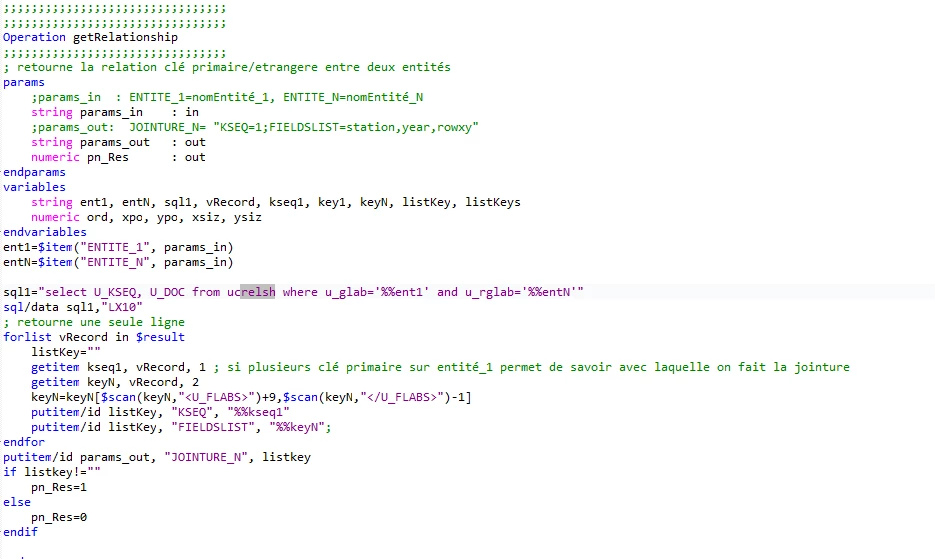Hello,
I want to communicate 2 forms with 2 entities in relation 1:n
The goal is to filter the form EX_050 (right) according to the filter applied to the form EX_041 (left)

To do this, I retrieve the information related to the entities in the DICT table through the following function.
------------------------------------------------------------------------------------------------------
 ----------------------------------------------------------------------------------------------------
----------------------------------------------------------------------------------------------------
However, I would like not to be linked to the DICT database which is a development database linked to the IDE.
To recap, how can I find out the relationships between entities with the compiled resources, without the connection to the dict database.
Thank you,
Maxime
------------------------------
Maxime Chazalviel
Rocket Forum Shared Account
------------------------------
Hello Maxime,
With the ProcScript function
$relation you can find the related key field of the one-entity (if it exists). I guess it should be possible to get the required info by looping through the fields of the many-entity (e.g. using
$entinfo and use the topic PAINTEDFIELDS) and check if the required one-entity field(s) can be found. This, of course, only works if the required fields are actually present (i.e. painted). But, I guess, you also could just paint the one-entity on the form with the many-entity (as outer) and then pass the profile of the one-entity (from the first form). In case the many-entity has relationships with different one-entities then this might be not straight forward.
There might be other ways to achieve this and these are just my initial thoughts (without doing any real in-depth research).
I hope this helps.
Kind regards,
------------------------------
Daniel Iseli
Principal Technical Support Engineer
Uniface Services
Rocket Software, Switzerland
------------------------------

 ----------------------------------------------------------------------------------------------------
----------------------------------------------------------------------------------------------------